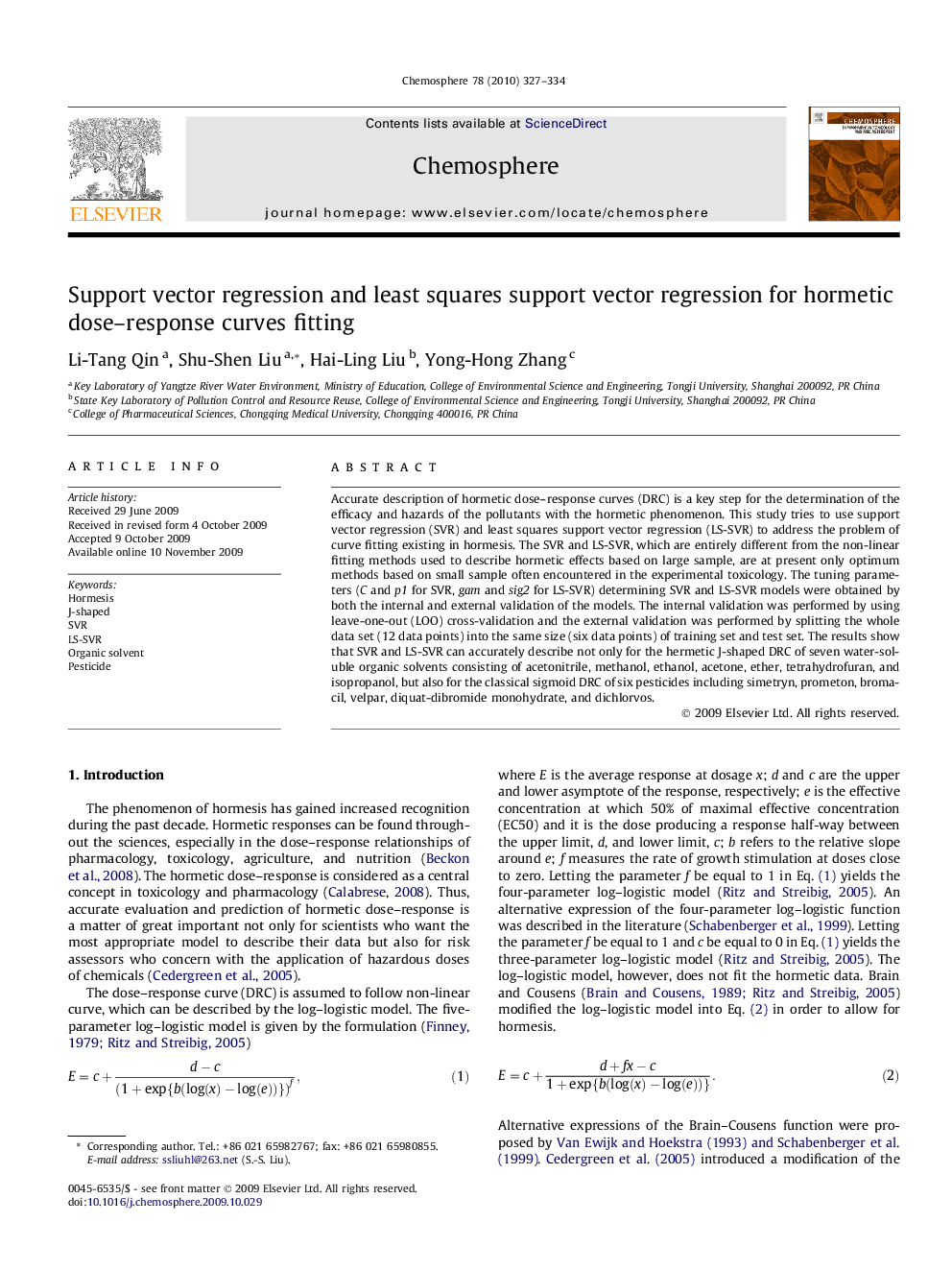| کد مقاله | کد نشریه | سال انتشار | مقاله انگلیسی | نسخه تمام متن |
|---|---|---|---|---|
| 4411877 | 1307612 | 2010 | 8 صفحه PDF | دانلود رایگان |

Accurate description of hormetic dose–response curves (DRC) is a key step for the determination of the efficacy and hazards of the pollutants with the hormetic phenomenon. This study tries to use support vector regression (SVR) and least squares support vector regression (LS-SVR) to address the problem of curve fitting existing in hormesis. The SVR and LS-SVR, which are entirely different from the non-linear fitting methods used to describe hormetic effects based on large sample, are at present only optimum methods based on small sample often encountered in the experimental toxicology. The tuning parameters (C and p1 for SVR, gam and sig2 for LS-SVR) determining SVR and LS-SVR models were obtained by both the internal and external validation of the models. The internal validation was performed by using leave-one-out (LOO) cross-validation and the external validation was performed by splitting the whole data set (12 data points) into the same size (six data points) of training set and test set. The results show that SVR and LS-SVR can accurately describe not only for the hermetic J-shaped DRC of seven water-soluble organic solvents consisting of acetonitrile, methanol, ethanol, acetone, ether, tetrahydrofuran, and isopropanol, but also for the classical sigmoid DRC of six pesticides including simetryn, prometon, bromacil, velpar, diquat-dibromide monohydrate, and dichlorvos.
Journal: Chemosphere - Volume 78, Issue 3, January 2010, Pages 327–334